Lake Effect Snow Friday
Areas of very fluffy lake effect snow continue across portions of the region this morning and will persist even into the evening hours.
The extremely fluffy nature of this snow is causing it to accumulate quickly in some areas. Here is a quick weather lesson to illustrate how uniquely fluffy this snow is.
As a general but very imprecise rule of thumb, ten inches of snow melts down to an inch of liquid precipitation. This is called a 10 to 1 snow ratio.
In reality, snow ratios vary greatly. Our climatological average snow ratio is closer to 13 to 1. A heavy wet snow will have a ratio under 10 to 1, while a more typical light-weight snow may have a ratio of 20 or 25 to 1.
Based on spotter reports this morning, snow ratios across the area have been on the order of 40, 50, 60, even 75 to 1. That means it would take a whopping 75 inches of snow to amount to just one inch of rainfall equivalent, whereas on average it would take 13 inches.
This “super-fluff” as I’ve been calling it to myself as I continue to shovel (7.7 inches at my house since yesterday… a lot but, within expectations of a careful reading of yesterday’s blog post) will continue to fall throughout the eastern and northern Finger Lakes this morning.
Several more inches are possible in some locations just through the noontime hours.
This afternoon, the snow will retreat to the northeast, mainly impacting eastern Wayne, northern Cayuga, and Onondaga counties. Another few inches will be possible.
The rest of the area may see some stray snow showers, but it should not be as steady.
The snow may take a small jog southward this evening into southern Cayuga and Cortland counties but will ultimately lift north and out of the region after midnight.
Northwest winds will increase this morning with speeds reaching around 15 mph this afternoon. Gusts around 30 mph are likely, which will cause areas of blowing and drifting. Afternoon highs will be around 20 degrees.
Before carrying on, another quick lesson.
Many have commented that the radar isn’t showing the snow. That is very true, and it makes forecasting this snow even more difficult. But why is that happening?
Lake effect is a process that is typically restricted to the near-surface atmosphere. Since it does not extend high up into the atmosphere, since the earth is curved, and since the beams of energy the radar sends out to bounce off precipitation are sent out at a slight upward angle, the energy shoots over the top of the lake effect, missing its presence altogether.
The radar sites that cover our area are located in Binghamton and Buffalo, which creates a gap across the central and northern parts of the region. While the Binghamton radar can pick up lake effect snow off Cayuga Lake fairly easily, snow off the other lakes and especially Seneca Lake is much harder to detect.
Ideally, I’d love to see a National Weather Service radar site near Penn Yan. That’ll never happen, though, so I’ll just have to dream and make do.

Weekend Weather Forecast
Once the lake effect departs the region overnight, high pressure will build in and some gaps in the clouds will begin to develop.
Saturday will start with morning lows in the upper single digits and low 10s. Locally colder pockets are possible if prolonged clearing takes hold in areas with a deep fresh snow pack.
Southwest winds will develop Saturday morning and persist through the day. Most of these winds will be near or under 10 mph.
Skies will be a mix of sun and clouds throughout the day, though there may be periods where it is mostly sunny.
The sunshine and southwest wind will push daytime highs in the upper 20s and low to even mid 30s.
Clouds will increase again Saturday night with lows mainly sticking to the low 20s. Sunday will be mostly cloudy, though a few glimpses of sun may still be possible. Highs will be similar to Saturday.
There may also be some snow showers on Sunday, particularly across the northern half of the region. Little to no accumulation is expected.
Temperatures will make another jump on Monday with many areas at or slightly above 40 degrees. Some light rain showers are likely later in the afternoon and evening, possibly mixing with some snow in some of the typically cooler areas.
Monday night should stay at or above freezing for most areas, leading to another day with highs at or above 40 degrees on Tuesday. After a quieter morning, rain will return for the afternoon with a smaller chance for snow mixing in at night.
It will remain on the milder side Wednesday and Thursday with lows in the 30s and highs around 40 degrees. Some sun may shine on Wednesday, but rain will return on Thursday as a cold front approaches.
That front will knock temperatures back for next weekend and the first few days of March with highs in the 20s. Beyond that, the range of possibilities remains too large to make any reasonable speculations to what we might see.
More Information:
» Finger Lakes Weather Radar
» Zip Code Forecasts
» Get the FLX Weather Mobile App
Get the latest forecasts delivered to your inbox automatically. This is the best way to ensure you are always seeing the newest information. Subscribing is easy, free, and secure.
This graphic represents an average over the entire Finger Lakes region. Localized variations should be expected. Stay Updated With Email Alerts



Christopher Denton
In Western New York there have been many wind turbines erected in the last 20 years. I once read that wind turbines can interfere with RADAR. Is that true also for weather RADAR? Also I read that wind turbines create heat differentials in the atmosphere due to the turbulence created by the blade rotations. Do the turbulence vortices elevate dust and fine particulate matter into the air to alter cloud formation and or precipitation?
I also read that large industrial solar arrays also create rising heat islands which may also alter the local weather. Does current meteorological practice and theory considered these modern and very recent alterations to the local temperature and wind patterns when forecasting possible weather events? For instance in the 1960’s there were a number of studies showing how heat and pollution plumes from cites substantially altered weather downwind – the South Bend, Indiana case being one of the most prominent.
Lastly with the closing of coal fired plants to the west of the finger lakes and the southern tier, and the concomitant lessening of particulate matter therefrom, has that affected weather forecasting? What are your thoughts on these matters?
Meteorologist Drew Montreuil
Hi Christopher.
Wind turbines can show up on the weather radar if they are nearby enough to the radar site. This occurs south of Buffalo, for example. However, most of the time, the data from the turbines is filtered out and not displayed on the end product, since it is a constant, known signal.
For most of the rest of your questions, while I am not an expert and have not research the topic or read scientific literature, it is my feeling as a forecaster that there may be some *small* impacts on the micro-scale, but that other factors in the atmosphere will have a much, much greater impact on where clouds and precipitation develop. I envision it like this: Twenty strong men are working together to move something extremely heavy. Along comes a preteen and helps out. Does the preteen actually help? Maybe a tiny bit… but the impact is extremely small. The turbines and solar farms are like the preteen, while everything else going on in the atmosphere are the twenty strong men.
Now, when it comes to cities, yes there is an urban heat island effect, and this can be enough in certain situations to significantly alter the weather downstream. Again, though, there are more powerful forces are work most of the time.
Florencia Ardon
Hi Drew!
Please join BlueSky! Many people (like me) have left meta apps.
Meteorologist Drew Montreuil
Hi Florencia. I have no love for Meta or any social media. Truth be told, I’ve been pondering what future, if any, I have on any social media platform. There is nothing that I post there that isn’t on my website, so you aren’t missing out on anything. Coming direct to FLXweather.com is the best way to see my latest work, and email is the best way to get in touch with me directly.